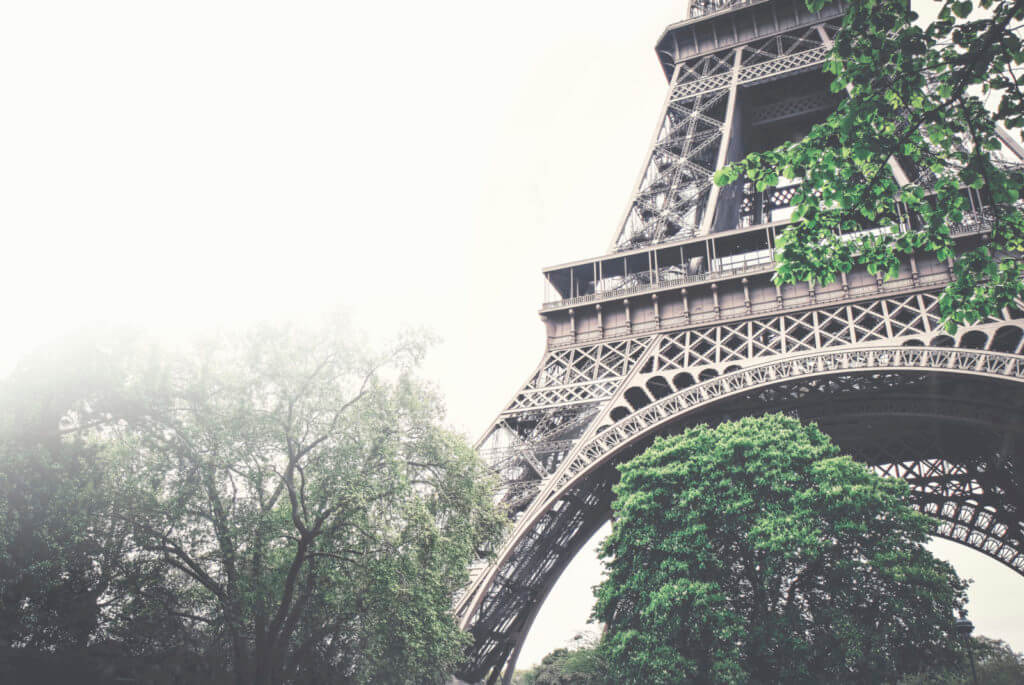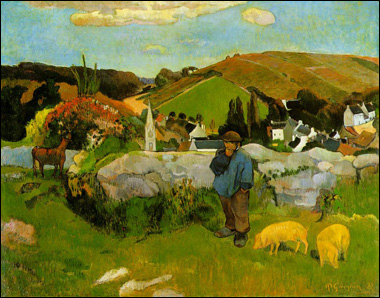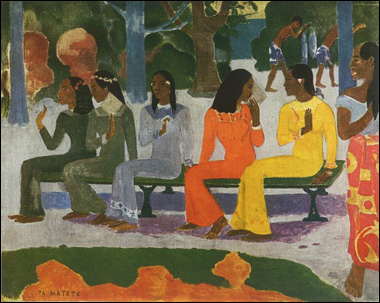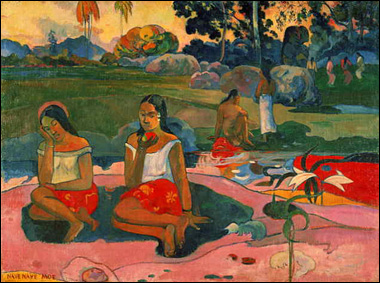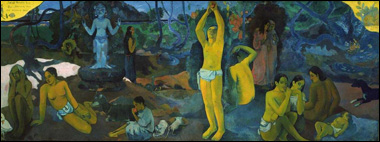Paul Gauguin was born in Paris, France in 1848. He was first a sailor, then a stockbroker and later a painter, and he worked at times alongside Cezanne and Van Gogh.
Although starting out as an Impressionist painter, Gauguin gradually found his own style, influenced by primitive art which resulted in paintings of flattened, stylized shape in vivid colors.
But Gauguin was always searching for something, and I think it shows in his art.
He first became enamored with painting and the art of the Impressionists after seeing an art show featuring Monet and Renoir, among others, in 1874. Gauguin started painting in his free time soon after, and was even mentored in Impressionism by Pissaro (a leading Impressionist painter.)
It didn’t take long for Gauguin to become dissatisfied with that style, however. He began to make changes in his art, taking some of his cues from Cezanne, as well as pursuing primitive artwork from Africa and Egypt and studying the flat art of Japan.
At the age of 37, somewhat unfulfilled with life, Gauguin left his wife and children in Denmark, where they’d moved just a year before, and returned to Paris to be a full-time artist and painter.
After six years of painting in a style that wasn’t very popular, and increasingly disillusioned with art that was, Gauguin became a sailor once more, in search of a new home and a fresh start. He stayed for a short time on various tropical islands, living in a village in Tahiti for a while and then on the Marquesas Islands.
Gauguin never truly returned to Europe or his family, but his occasional visits brought back paintings that were considered very strange for his time. His desire to depict the real emotion and “truth” found in the primitive cultures of the islands pushed him to emphasize his paintings with intense color, in a deliberately “primitive” way, to match the places he lived.
Gauguin died in 1903, primarily of poor health, in the South Sea Islands where he’d made his home.
Perhaps only then did he find what he was searching for – the answers to these three questions, which are also the title of his most famous painting: Where Do We Come From? What Are We? Where Are We Going?
This post may contain affiliate links.
